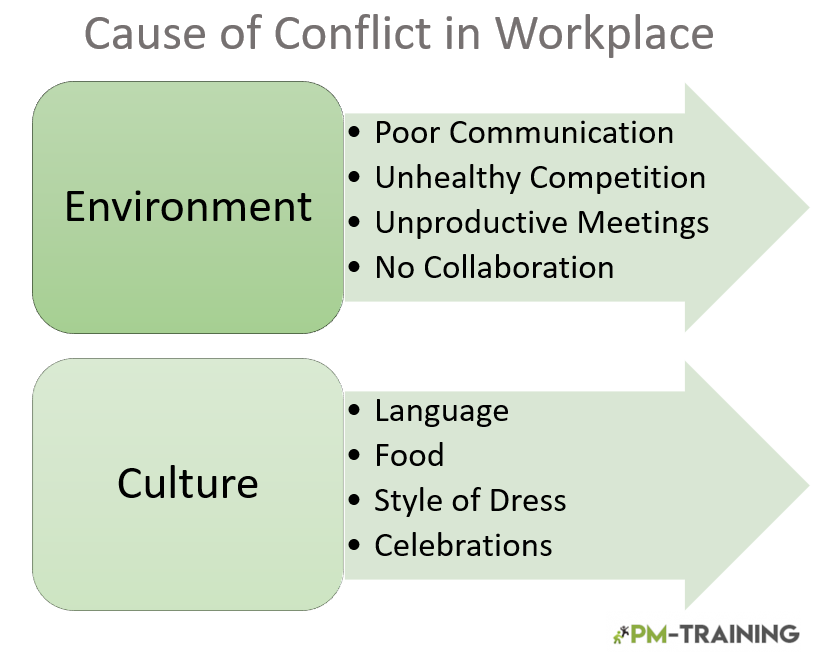Conflict is an inevitable part of our lives. Managing the cause of conflict is a skill a project manger needs to work on throughout their career. Not all conflicts are the same and first step is understanding the conflict level
When managing stakeholder reduces the existence of conflicting expectations among the stakeholder community. There is no one that you can meet in life that you are absolutely certain to agree with all of the time. In the same regard, there isn’t anyone that would agree with you at all times.
Because disagreements can occur regardless of severity, it is vital to be prepared and have the right tools to resolve all aspects of conflict in organizations and teams. An important component to conflict resolution is being able to define and identify them before they occur.
Conflict, as defined in Oxford is a serious disagreement or being incompatible or at variance. This can occur through fighting, differences of opinion or quarreling. It is a discord between opposing elements or ideas and they can vary between mild methods of disagreements to large emotionally charged confrontations.

Avoidable Cause of Conflict
In an agile team, there are several reasons that contribute to conflict. To reasons that contribute to underlying conflicts are between the team and culture differences.
Conflicts from Team Environment
You are not going to have a project that isn’t run by people. Because agile project teams that have people with varying personalities, cultures, and priorities involved, you will find that underlying conflicts will occur on its own. Especially when you consider the concept that projects tend to utilize a system with multiple project managers for execution.
Another contributor to why a combative environment may occur, is due to the fact that team members may not be familiar with each other enough to become settled and comfortable with each other yet have to work towards meeting goals and deadlines. When handling team conflicts you want to try achieve a win-win situation and avoid lose-lose resolutions.
Different behavioral conflict can occur from the work environment during various stages of a project’s life cycle. Some things that you may see is that there are some team members that would show excitement in their roles while there are others who do not share the same level of enthusiasm. The differences in these motivation levels can be influenced by:
(1) Project manager not gaining trust or confidence of team members
(2) Unhealthy competitions
(3) Meetings being unproductive
(4) Lack of collaboration or connection between team members
Conflict from Cultural Differences
We define culture as the way we do things or how our habits are reflected throughout our communities. When we are in communities or countries outside of our own, cultural conflicts that arise may be:
(5) Language
(6) Food
(7) Celebrations
(8) Style of Dress
Someone unaware of the nature of offense towards someone of another culture culture may find themselves creating problems with other team members. Even if they are small offenses, they can escalate and create bigger problems. It is important for project managers to be mindful of cultural conflicts in organizations and work towards leading their team to practice adaptability and awareness to minimize them
21 Techniques to Manage Cause of Conflict
- Confronting: Also called problem-solving it is where the problem is confronted not the person, where the problem is dealt with head-on.
- Collaborating: When individuals or teams work with other individuals or teams to solve an issue.
- Compromising: When both parties compromise for the sake of reaching an agreement.
- Smoothing: Problem played down and turns attention on what is important.
- Forcing: Forces the issue to be resolved by whatever is needed, not a great long-term solution as effects team morale.
- Withdrawal: Means avoidance as it is hoped the problem will go away without being dealt with.
Constructive Roles:
- Initiators: Actively initiates ideas and activities.
- Information Seekers: Actively seek more information to gain more knowledge and understanding.
- Information Givers: Openly shares information.
- Encourages: Maintains a positive and realistic attitude.
- Clarifiers: Ensures people completely understand issue or conversation.
- Harmonizers: Enhance information so understanding is increased.
- Summarizers: Takes details and restates them in simpler terms or puts them in the context of the bigger picture.
- Gate Keepers: Draws others into conversations.
Destructive Roles:
- Aggressors: Openly hostile towards people.
- Blockers: Blocks access to information and makes thing awkward.
- With-drawers: Does not participate in conversation or ideas etc.
- Recognition Seekers: Always looks at a situation to see what is in it for them.
- Topic Jumpers: Disrupts during effective communication by constantly changing the subject.
- Dominators: Presents their opinions forcefully and without considering others,
- Devils Advocate: Will always take a contrary view to statements or suggestions.
